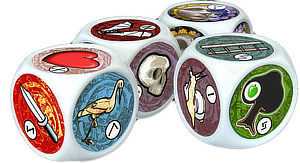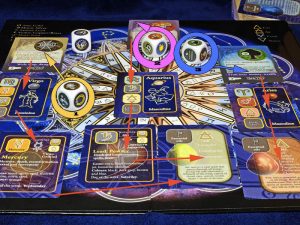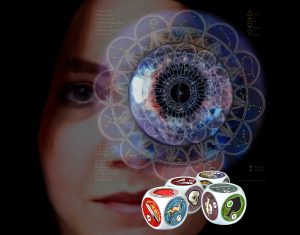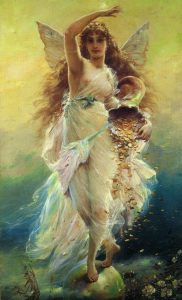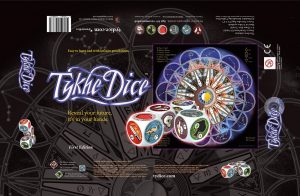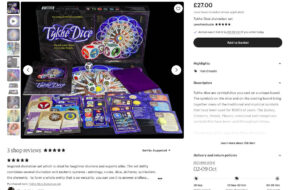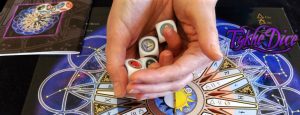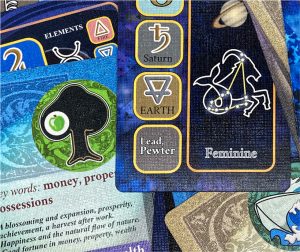secret of the web
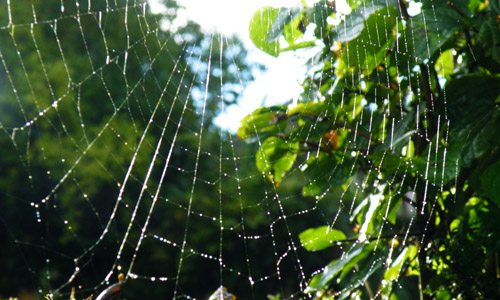
Before we look more closely at the Web and it’s symbolic meaning, here is just a little something to think on!
‘It’s weave woven in those liminal spaces between light and darkness, all life can be seen as the warp evolving in both time and space, whilst the weft is spun using our very lives.’

Look at this picture of the web in the early morning Spring sunshine, covered in dew drops; each dew drops reflects and sparkles, with each dew drop being tied to every other by virtue of the web on which they hang, and on the surface of each dew drop is reflected every other dew drop on the web, within this structure can be found everything that exists or has ever existed.
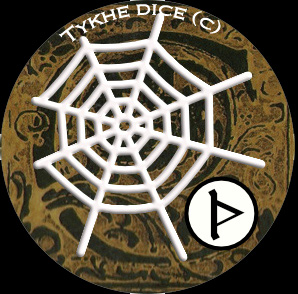 You cannot put deeper meaning to the Web without mentioning both the Spider and the Human process of weaving, if you think of times long past when weaving was a practice carried out in our communities as part of their daily lives, together with many commonly used phrases such as “close knit” or “tightly woven” when describing the intimacy of a family group, or the phase “patch up” when mending a strained relationship, to “In knots” when feeling anxious and an old favorite “shared common threads” when used regarding people or a situation as an expression of relationship at a very fundamental level, this metaphor suggesting a degree of unity, whilst further metaphors and allegory maybe seen to point to a meaning much closer to creation, it is not such a great leap to link the web spinning of the Spider with other world ability.
You cannot put deeper meaning to the Web without mentioning both the Spider and the Human process of weaving, if you think of times long past when weaving was a practice carried out in our communities as part of their daily lives, together with many commonly used phrases such as “close knit” or “tightly woven” when describing the intimacy of a family group, or the phase “patch up” when mending a strained relationship, to “In knots” when feeling anxious and an old favorite “shared common threads” when used regarding people or a situation as an expression of relationship at a very fundamental level, this metaphor suggesting a degree of unity, whilst further metaphors and allegory maybe seen to point to a meaning much closer to creation, it is not such a great leap to link the web spinning of the Spider with other world ability.
Even the idea of “Spinning” a web can be seen as anthropomorphic; Spiders use different glands near their abdomen to secrete their silk depending on the purpose of the strand, the process of spinning we as humans use forms a usable yarn from other fibres.
Take the Latin word for a Spiders web “tela” or fabric, looking at other romance languages we have a translation very close to Spider-fabric.
The parallels between the web-spinning of Spiders and the spinning of yarn into fabric by human activity can be seen in many cultures around the globe in their myths and folklore.
In North American First Nation peoples, the web is linked to the birth of the constellation Ursa Major, seen by these peoples as seven men transformed into stars and climbing to paradise by unrolling a Spider’s Web.
The Hopi and Navajo have the Spider Grandmother who thought the world into existence through the conscious weaving of her Webs in their creation myths.
The Spider’s Web has been used as a means of protection in both Islamic and Jewish Oral traditions. Whilst in Verdic philosophy of Indria; The Spider is depicted as hiding the ultimate reality within veils of illusion. Is not Indra’s net a metaphor for the Buddhist concept of interpenetration, this holds that all phenomena are intimately connected for Indra’s net has a multifaceted Jewel at each vertex, and each Jewel is reflected in all the other Jewels, for when Indra fashioned the world he made it as a web.
So we can see the Web in many mythological fables, cosmology, artistic, spiritual depictions and oral traditions throughout the world we met Neith the spinner and weaver of destiny from Ancient Egypt in part 3, but do not forget Ishtar of the Babylonians and the ill fated Arachne of the Greeks. Loki of the Northern tradition also has links as “locke” translated from the Swedish dialect meaning Spider a trickster and weaver of mischief.
However we perceive the Spider’s web, as we gaze upon it reflecting an intricate array of light and complexity, you cannot help but be reminded that there is so much more to the creeping quiet Spider and it’s Web than initially meets the eye, whether you see it as sacred or not it is truly an amazing product of evolution, one our ancient ancestors must have observed as nothing short of divine.
Just as the Spider weaves a web, we in turn must weave our own lives. This symbol serves to remind us that our choices construct our lives, so when the web is drawn in your reading it is a message to be mindful of the choices we are making; ask yourself!
- How are my choices affecting my life?
- How can my choices improve my life?
- How are my choices affecting others in my life?
In this way they not only draw attention to our life choices, but also give us an overview of how we may manipulate our thinking in order to construct a better life, one we wish to live. Look at the amazing construction of the web, you cannot but become aware of these fully functional, practical and ingenious designs, from at a basic level the web serves as not only home but also food storage and incubator their functionality appears limitless.
Looking closer consider this ingenious diversity within the web like construction of our own lives; How are we designing the most effective life?
This brings us to a point of understanding that our decisions, our choices and actions are far-reaching, effective tools in life. That we may either weave a web that may serve or enslave us, the deeper meaning of this symbol beckons us to be mindful of our behaviour, wise up and be smart about the life we weave for ourselves.
